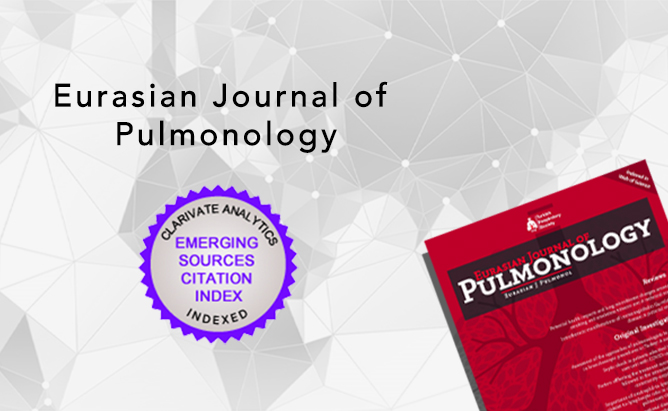2Tunceli State Hospital, Clinic of Pulmonary Medicine, Tunceli, Turkey
3Department of Pulmonary Medicine, Erciyes University Faculty of Medicine, Division of Allergy and Immunology, Kayseri, Turkey
4Department of Pulmonary Medicine, Gazi University Faculty of Medicine, Ankara, Turkey
Abstract
INTRODUCTION: Neutrophil-to-lymphocyte ratio (NLR), an index of systemic inflammation, has been associated with poor survival for many cancers. The aim of this study was to investigate the clinical significance of blood NLR in nonsmall cell lung cancer (NSCLC) as a prognostic factor.
METHODS: We retrospectively reviewed medical records of patients with NSCLC and collected data from December 2009 to September 2013. NLRs were calculated at the time of diagnosis before any type of treatment. Data about NLR, age, sex, smoking, histopathology, Eastern Cooperative Oncology Group (ECOG) performance score, disease stage, serum albumin, and treatment modalities were investigated. These parameters were tested for its association with the 1-year, 2-year, and overall survival (OS); OS was calculated by the Kaplan–Meier analysis.
RESULTS: A total of 121 patients with a median age of 61.9 (range 34–84), 14 (11.6%) female, and 107 (88.4%) males were included in the study. Majority of the patients were at local or advanced stage (Stage IIIA: 14.9%, Stage IIIB 14.9%, and Stage IV: 48.8%). Most common histological tumor type was squamous cell carcinoma (56.2%). Median neutrophil (N) count was 6.400 μl/ml, median lymphocyte (L) count was 1.570 μl/ml, while median NLR was 3.7. In univariate analysis, survival rates of patients did not have any differences according to gender, age, tumor histology, albumin level, and treatment modality (surgery and chemoradiotherapy). 1-year and 2-year survival rates of patients with ECOG 0 were higher than ECOG 1, 2, 3 patients (P = 0.034). Survival rates of Stage 1 patients (P < 0.001) and Stage 2 patients (P = 0.035) were longer, and survival rates of Stage 4 patients were lower than all other stages (P < 0.001). We divided the patients into 2 groups according to median NLR value of study group as NLR ≤3.7 and NLR >3.7. The percentage of patients who survived at the 1-year and 2-year were higher in the NLR <3.7 group (P = 0.043). The results showed that there was no significant difference regarding the patient's age, smoking history, tumor histology between 2 groups of high-level and low-level NLR. However, more male patients had higher NLR level (P = 0.036), and NSCLC patients with ECOG 2–3 (P = 0.002) and advanced disease stages (P< 0.001) were significantly associated with high-level NLR. Kaplan–Meier survival analysis revealed that there was a significant survival difference between NLR ≤3.7 and NLR >3.7 groups (14 vs. 9 months, P = 0.036). The multivariate Cox regression analysis revealed that the independent predictive factors for longer OS were low ECOG performance score (hazard ratio [HR] 0.786, 95% confidence interval [CI]: 0.799–0.931, P = 0.001), early disease stage (HR 1.517, 95% CI: 0.527–0.886, P < 0.001), and low NLR (HR 0.573, 95% CI: 0.440–0.962, P = 0.036).
CONCLUSIONS: In our study, the increased NLR is an estimator of shorter survival in patients with NSCLC. NLR is an easy-to-measure, reproducible test that can be considered as a routine practice in patients with NSCLC.




 Fatma Yıldırım1
Fatma Yıldırım1 




